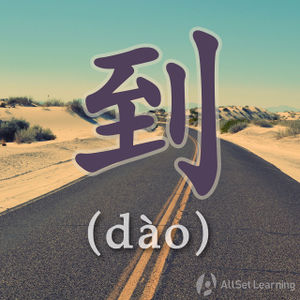Difference between revisions of "Expressing "when the time comes" with "dao shihou""
| Line 28: | Line 28: | ||
<div class="liju"> | <div class="liju"> | ||
| − | * <em>到时候</em> 再说吧。 | + | * <em>到时候</em> 再说吧。<span class="trans">We will talk about that later when the time comes.</span> |
| − | * <em>到时候</em> 见。 | + | * <em>到时候</em> 见。<span class="trans">See you then.</span> |
| − | * <em>到时候</em> 详谈。 | + | * <em>到时候</em> 详谈。<span class="trans">Talk more then.</span> |
</div> | </div> | ||
Revision as of 04:15, 26 October 2016
| This article is a stub. Editors can help the Chinese Grammar Wiki by expanding it. |
到时候(dào shíhou) basically means the same thing as "when the times comes." Usually "when the time comes" is pointing to a specific event in the future.
Contents
Structure
Usually this grammar pattern starts with a statement to set things us (A), then the things that happens in the future is stated (B) after the 到时候.
……,到时候 + ……
Examples
- 现在 不 好好 准备 考试,到时候 肯定 考 不好。If you don't prepare well, then you won't do it well in the exam.
- 我 要 学 唱 中文 的 生日快乐 歌,到时候 唱 给 你们 听。I want to learn the Chinese song "Happy Birthday". I'll sing for you guys when the time comes.
- 你 先 自己 试 一 试,到时候 我 再 教 你。You can give it a try first. I will teach you when the time comes.
Commonly used expressions with 到时候
- 到时候 再说吧。We will talk about that later when the time comes.
- 到时候 见。See you then.
- 到时候 详谈。Talk more then.
Sources and further reading
Books
- Exemplification of Common Sentence Patterns in Spoken Chinese 汉语口语常用句式例解 (P.63)→buy NEEDS LINK
- Short-term Spoken Chinese: Elementary (汉语口语速成基础篇)(P.199) →buy
- Common Chinese Patterns 330 (汉语常用格式330例) (p. 62)→buy



